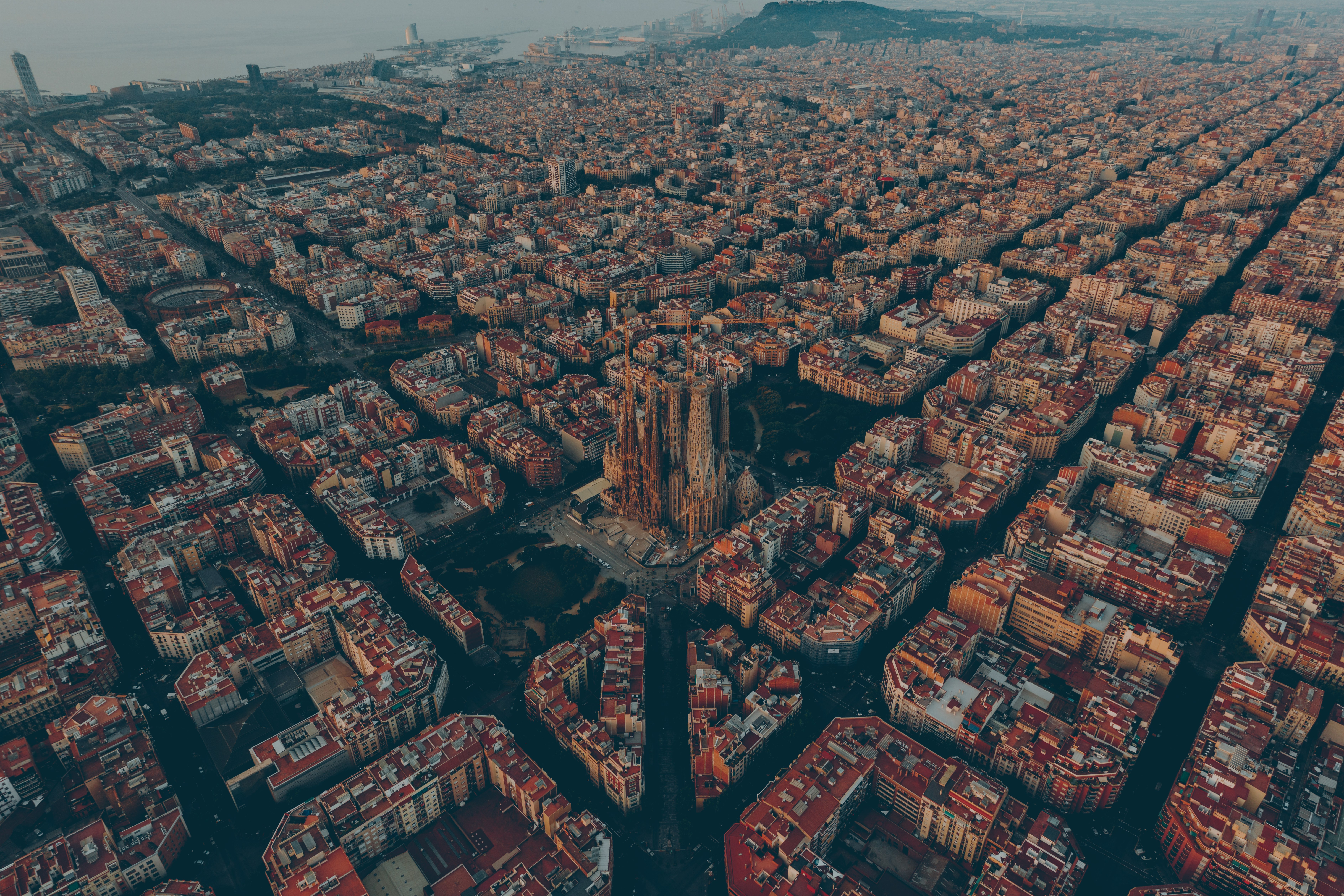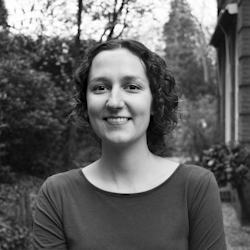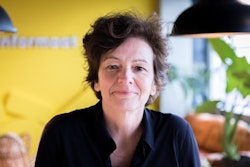Service design days 2021 (Barcelona)
Author
Marloes Reijnders
Published
08 December 2021
Reading time
6 minutes
“New perspectives: Breaking out of the design bubble”. That was the theme of the Service Design Days 2021 in Barcelona. As a UX designer at a service design conference, I forced myself to leave my own bubble too. It turned out to be a learning experience.
Last September I boarded a plane to Barcelona to attend the Service Design Days 2021. This international conference takes place annually in the Catalan capital.
Being offline
Sun, sea, beach and design. All the ingredients for an exciting weekend were present. In addition, for many – myself included – this conference was the first major offline gathering in a long time. That made the expectations and tension even greater in advance. However, the tension dropped almost immediately when I arrived at the kick-off at the 'playa'. The meeting was a relief for me. In no time I had ended up in an entertaining conversation with participants from all over the world with different functions. Interdisciplinary cross-fertilisation turned out to be an essential part of the conference. As a UX designer I felt completely at home.
Social interaction
Social interaction was the central theme of the conference. During a number of icebreakers on the beach we quickly got to know each other through short games. Before we knew it, we were standing as one cheering crowd encouraging two contestants in an all-deciding round of rock, paper, scissors. The atmosphere was set.
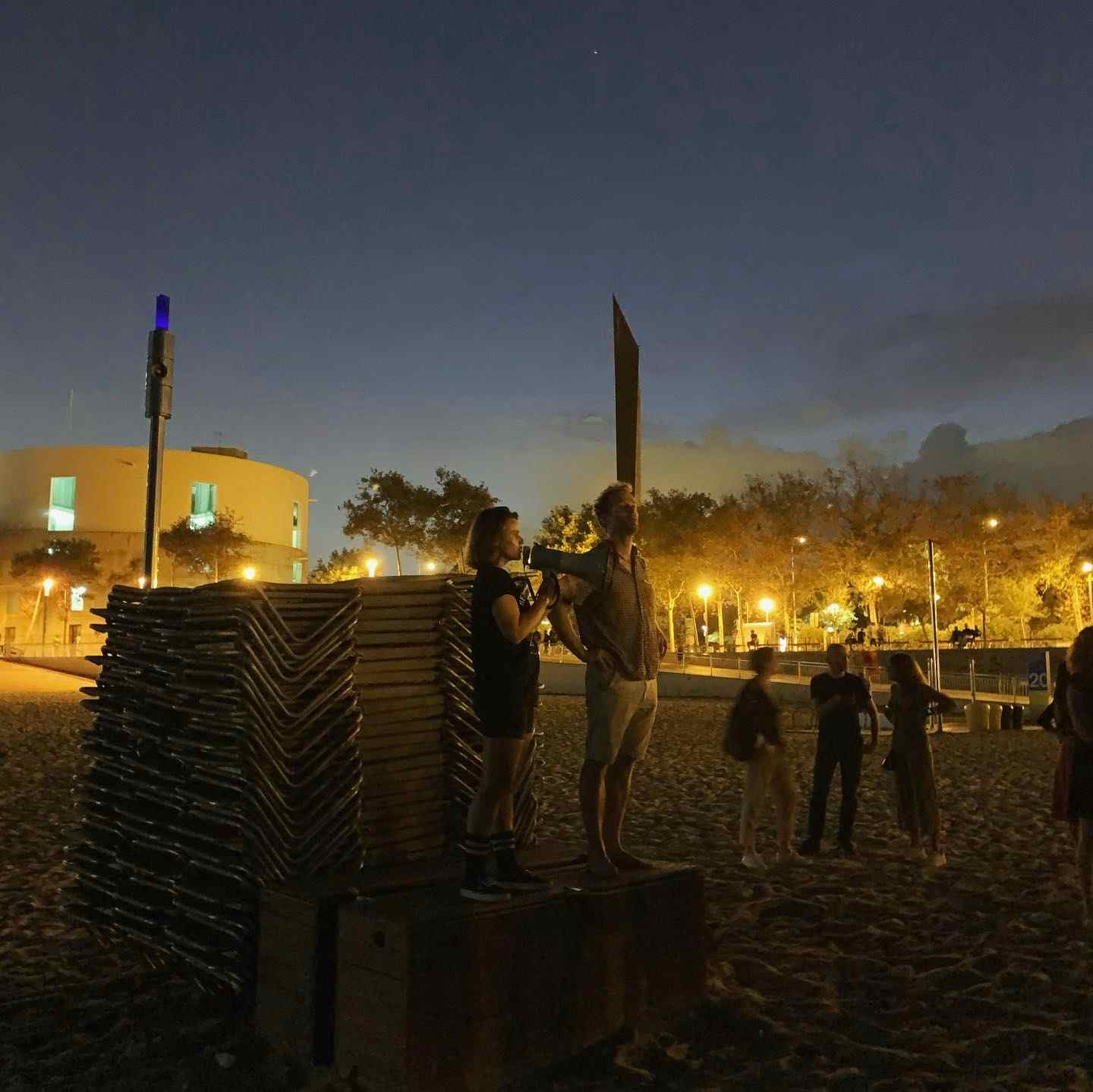 De playful opening op het strand door Koos Service Design
De playful opening op het strand door Koos Service Design
Out of that bubble!
Of course, the conference did not only consist of beach parties. The program consisted of an intensive two-day program with lectures and workshops. During these two days we were challenged to take a critical look at the frameworks we use in our work and the ways in which we work and our roles. This approach allowed us to break free from our daily patterns, for example by drawing inspiration from other fields.
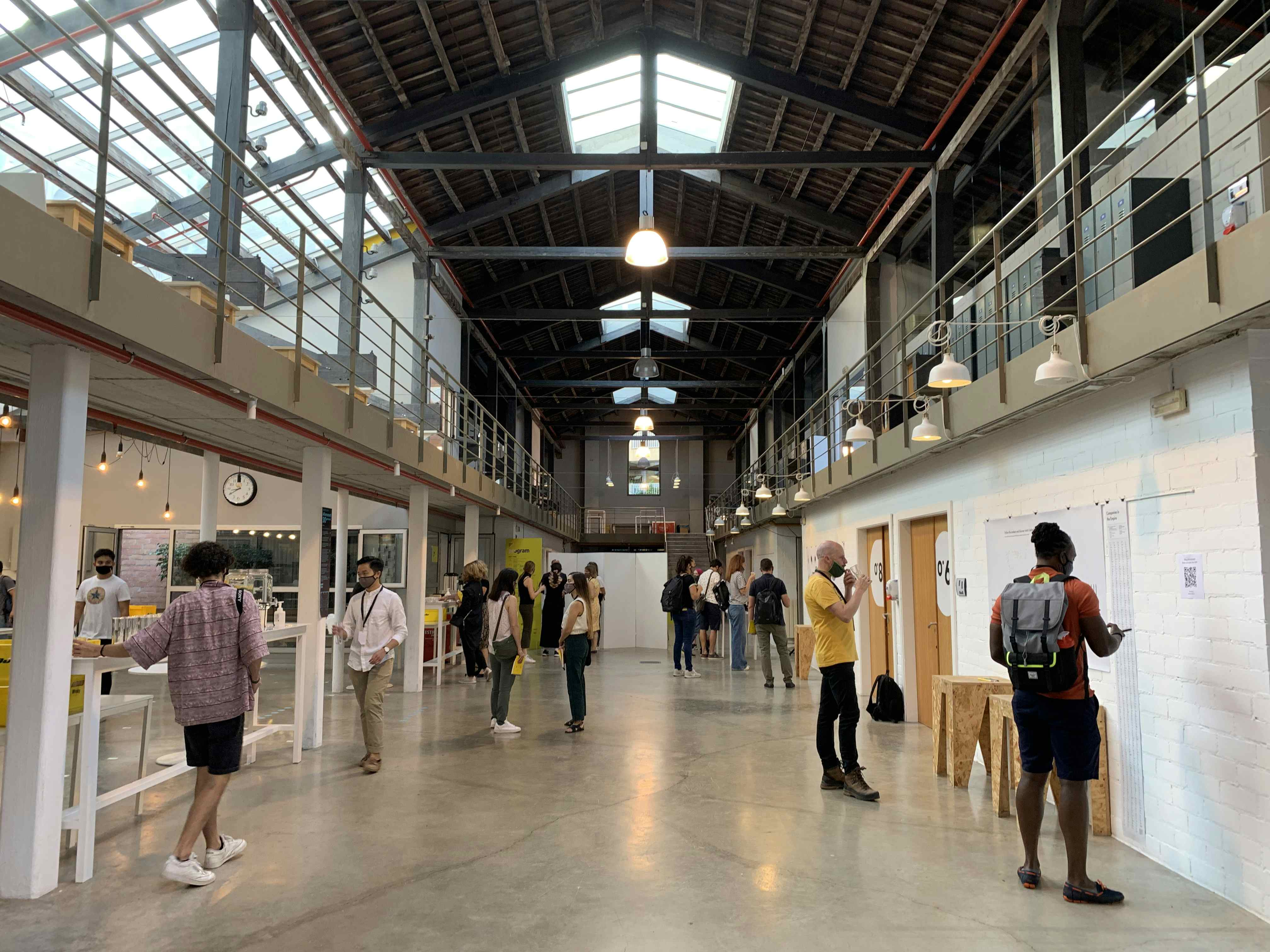
The conference took place at BAU Design College Barcelona
“Fuck design thinking, move to transdisciplinary thinking. Fuck your ego, be equal thinkers in a transdisciplinary world.” A clear message by Anna Kirah, one of the two opening speakers and design anthropologist and psychologist at Halogen in Norway. In a screaming, almost irritating way, Anna tried to shake us up (at 9 a.m.) and immediately make us look critically at our way of working. She argued that by giving room for productive confusion, irritation and amazement, we gain insight into the unknown unknowns. These are things we wouldn't even suspect to exist if we didn't get off our beaten track. To be clear: these are not known unknowns, such as the color code of purple, but things that surprise us and offer us a whole new perspective. Thus, a slide appears with the following directions to avoid our own biases and assumptions.
- Stop planning everything and allow yourself to get lost.
- Stop writing interview guides.
- Be honest about your observations, feelings and interpretations (understandings).
- Go for quality instead of quantity in research. So rather dive into the depths with one user than stay on the surface with ten users according to a protocolled interview.
Of course she also has some assumptions about how we work as a designer, but she did strike a chord. This was reflected in the discussions I had with other participants throughout the conference about her presentation. Of course we are not robots that apply a design thinking method, but not all projects succeed in creating space for amazement. 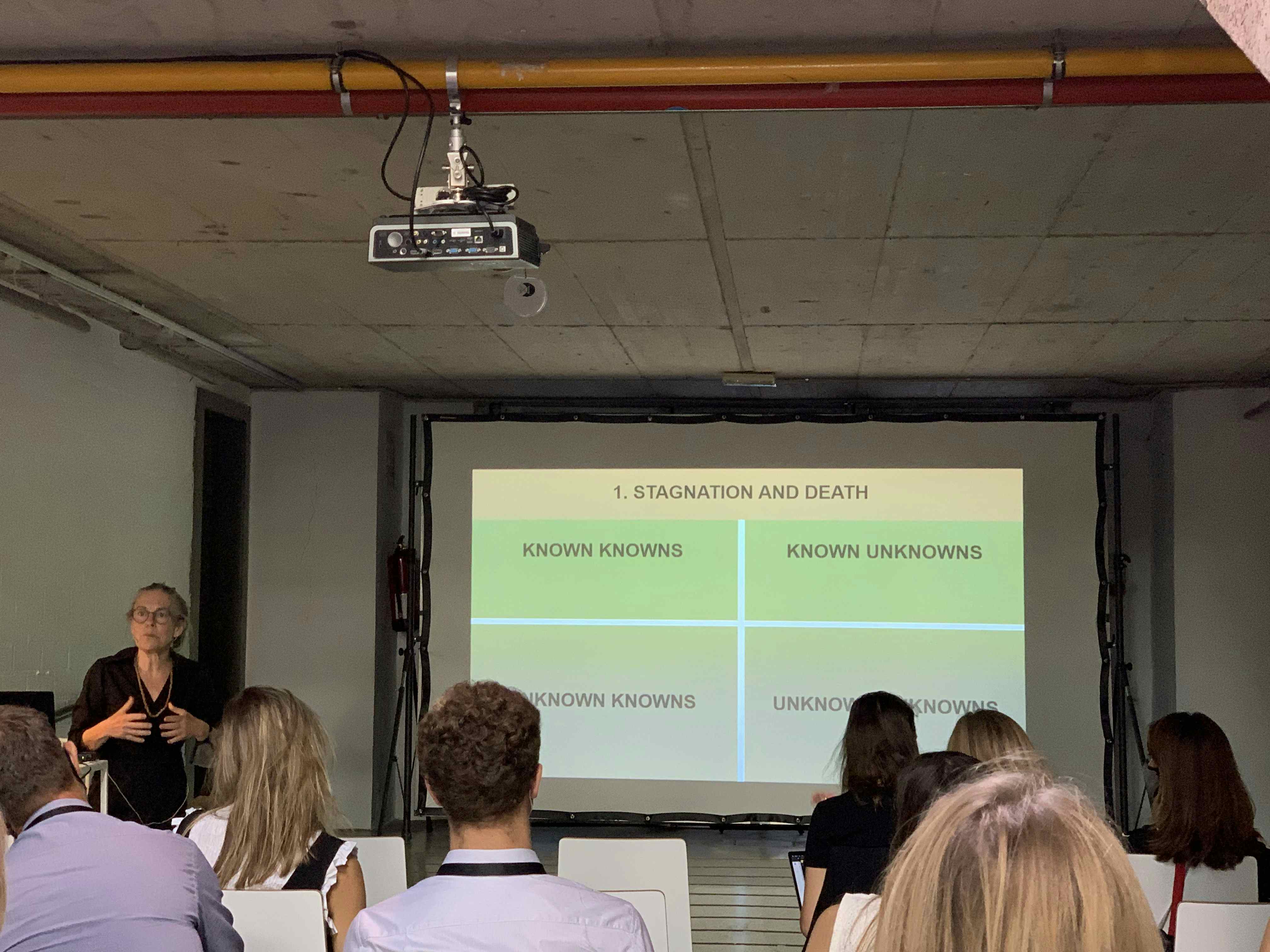 Anna Kirah shows us where we are on the spectrum of the knowns
Anna Kirah shows us where we are on the spectrum of the knowns
Design today
“What is the role of the designer in the 21st century?” This question was asked by Biniti Vasa of SPACE10, Ikea's independent innovation studio. Confronted with the ecological and social crises of which the newspapers are filled every day, it is no longer permissible to be blind to the effects of design on communities and on the earth. In the West, said this Bombay designer, people have a predilection for order and hierarchy, but that ignores the diversity and complexity of the world. In order to combat this destructive urge for law and order, we have to embrace complexity again by applying ten design justice principles in our work. These divergent principles are intended to make design a healing and shared bottom-up practice again. An example: If you want to consider the impact of your design on the earth, the earth should also be given a voice in the design process. This is based on the second principle: “We center the voices of those who are directly impacted by the outcomes of the design process.”
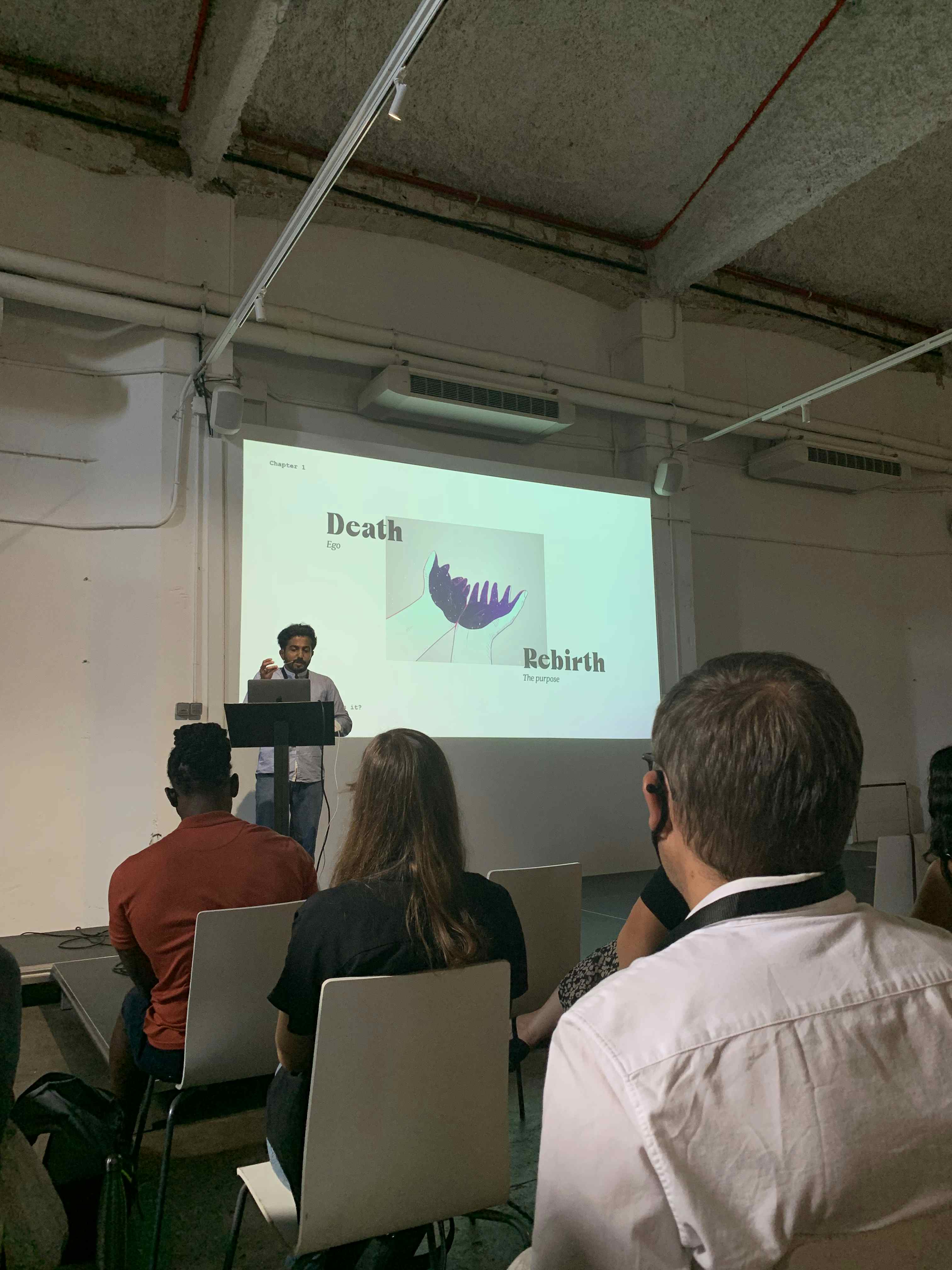 Biniti Vasa takes us into his Rebirth as a designer
Biniti Vasa takes us into his Rebirth as a designer
As far as I'm concerned, his proposal is a meaningful way of going off the beaten track, relinquishing control and allowing uncertainties into the design process. In addition, it formed a bridge with a theme that many speakers also discussed, namely the consequences of design on the world. That is directly related to the way in which we define our role as a designer. Biniti showed that strikingly.
Make an impact
Because we as designers often have to put human consumption needs above everything else, the effect of our decisions on, for example, climate or working conditions quickly fades into the background. That is an inconvenient fact, but it goes to the heart of what we do as a designer. Who do we design for? What is its value? Can that value only be expressed financially? Or do climate and health also play a role? Such questions challenged us to translate our personal and professional values into our work. It was good to see that so much attention was paid to designing based on values, something we also do at Informaat with our True experience approach. 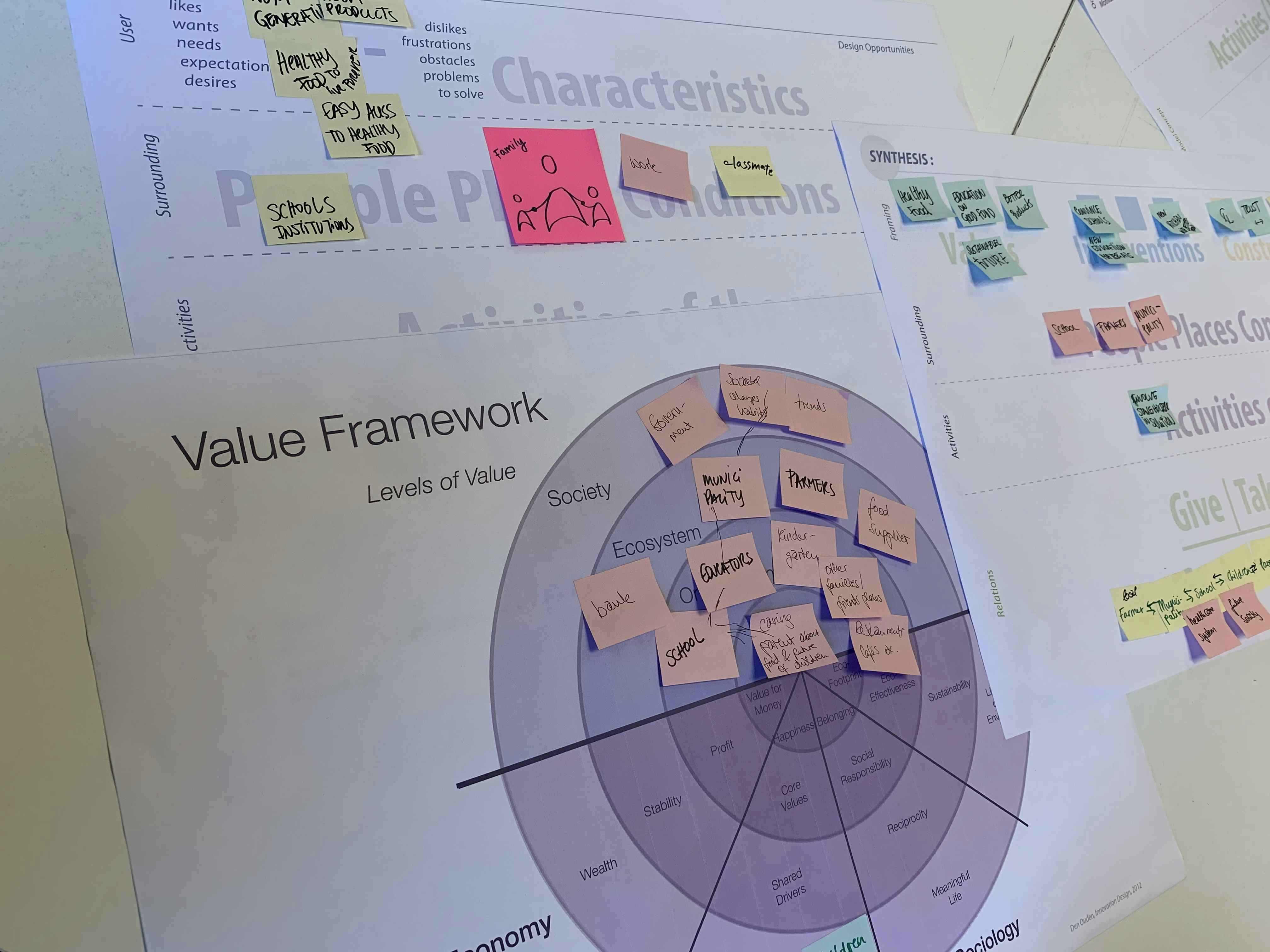 Working with the Value Framework of Pelin Gültekin (Philips) with Designing for Social Innovation
Working with the Value Framework of Pelin Gültekin (Philips) with Designing for Social Innovation
Change, now!
Many speakers were resolute. It is time to leave the paradigm of human-centered design behind us. After all, this is the reason why we ignore the negative effects that design can have on our planet and societies. According to many, we should look for an inclusive approach that takes the planet and its inhabitants into account. A statement that I completely agree with.
Second-hand first
But what do all those beautiful theories actually look like? How do you actually break free from existing patterns and shape change? Silvia Lleras (founder of the Spanish online marketplace Wallapop) shared with us the decisions she took when building her platform.
It is customary to set up a webshop in such a way that consumers are tempted to make impulse purchases. With the push of a button it will be at home tomorrow. Silvia sees it as her mission to stimulate a conscious way of consumption with the platform. Wallapop is therefore a place where people search specifically and then have to align with the seller how the product gets to the buyer. In this way people are connected with each other and the purchase becomes an active experience again. At the same time, users may be surprised to find products that might not normally appear in their data lane. 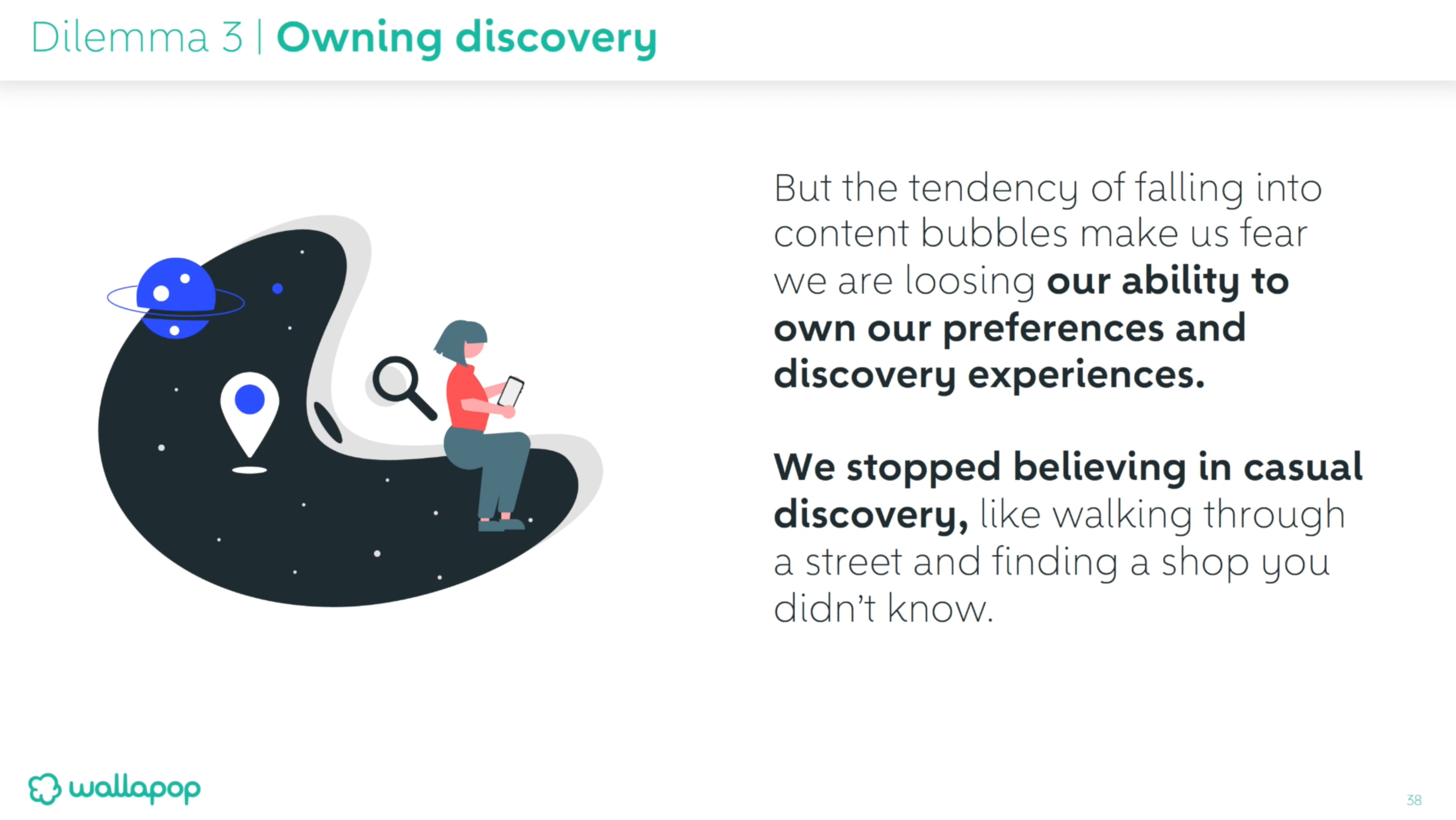
Silvia Lleras Wallapop
Silvia demonstrated how you can set up a marketplace if your design is based on values such as sustainability, circularity, connection and conscious consumption. This determines her choices, even if they often go against existing dogmas.
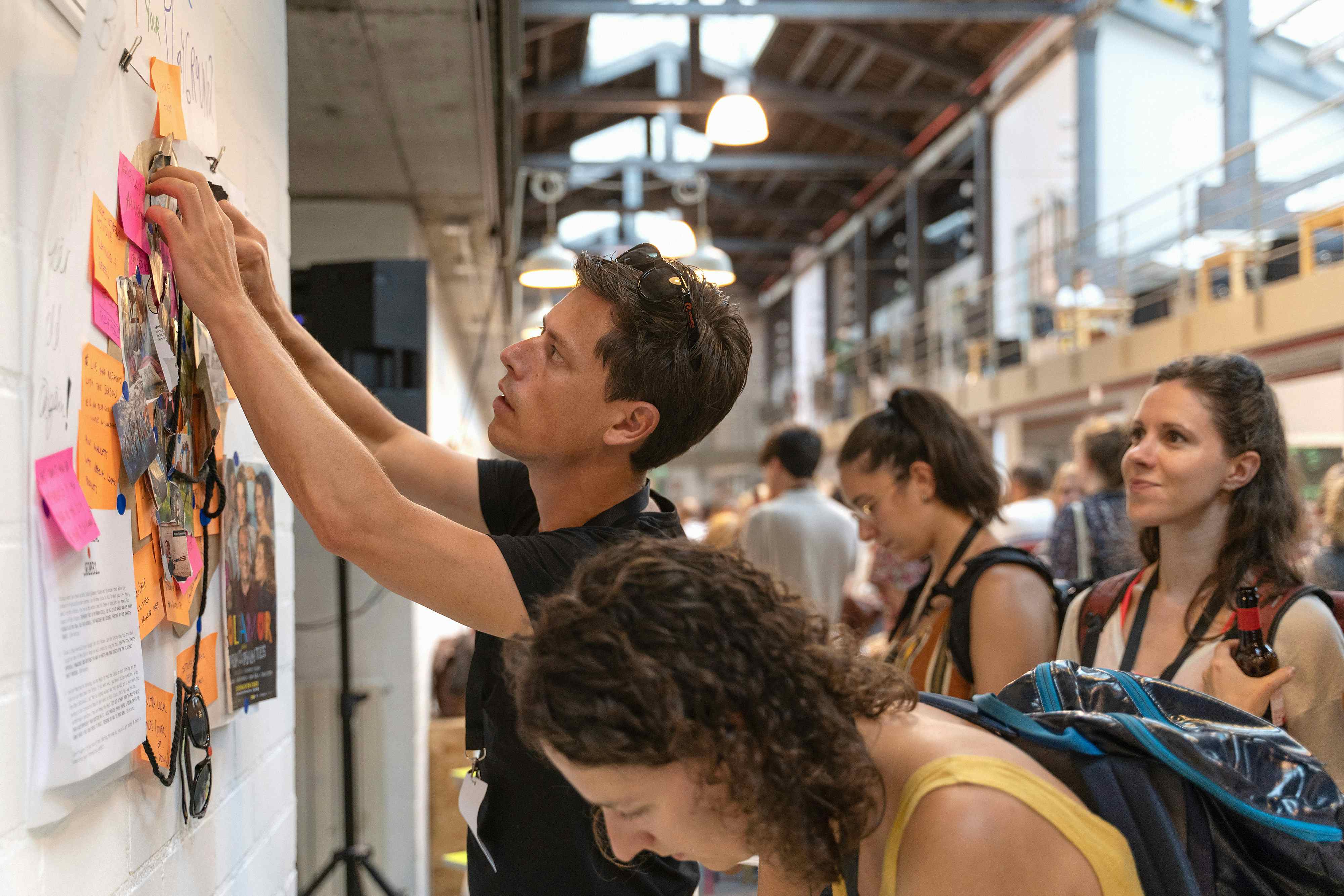 We ended the conference by sharing our visions for the future
We ended the conference by sharing our visions for the future
Exit bubble?
I expected to return from this conference with a notebook that would neatly explain how service design works, what the processes are and how I can apply them step-by-step. That was not the case.
What I did learn is that there is no single success formula for the application of service design. On the contrary, I must continue to challenge myself not to become rigid in one way of working and thinking. Both personally and professionally, this conference has pulled me out of my comfort zone and inspired me. I want to hold on to this by seeking inspiration in other fields and especially by keeping the dialogue going with others. In search of the unknown unknowns.
About the author

Events
Service Design
